- No products in the cart.
Buyer’s Guide to Lab Chillers and Water Baths
Oct
14
2021
Many lab procedures must be performed at a specified temperature. Not only that but the precise temperature must be maintained for a length of time without fluctuating. That’s why devices are needed in the lab for raising and lowering temperatures. That’s where lab chillers and water baths come into play.
What is the Function of a Chiller and Water Bath in a Laboratory?
Lab chillers and water baths both are used in raising and lowering temperatures. Water baths are used to elevate temperatures while lab chillers are used to lower temperatures. A water bath is a precision instrument that is calibrated for accuracy and reliability.
Chillers are refrigerated devices used to cool off a sample to a preset temperature. This is done by removing the heat and transferring it to another element. These elements are typically air or water.

When Should I Use a Chiller and Water Bath in a Laboratory?
Chillers and water baths are ideally used for liquid samples that cannot be exposed to direct heat. These substances would typically include flammable liquids and biological materials.
Water baths are designed with a unit that either heats or cools a liquid sample to the desired temperature. The unit has a chamber that contains the water and a control station to preset temperatures. The samples are typically in glass vials and placed in the chamber for either heating or cooling.
What to Consider When Choosing a Chiller and Water Bath
- Temperature. It’s important to consider the temperatures that you typically work in and if a water chiller can be added to the standard unit. The range of temperature will depend on the technology used for heating and chilling and on the type of fluid used in the bath.
|
Fluid |
Temperature Range |
|
Distilled water |
(ambient +5) 𝆩C to 99.9°C |
|
Oil |
+50°C to 250°C |
|
Dry beads |
-80°C to 180°C |
Chillers are necessary if you want to lower the temperature or bring it to ambient. Your average chiller will lower the temperature to -25°C. Some manufacturers offer chillers as an accessory that can be added to the water baths for chilling capability.
There’s also such a thing as waterless baths. Waterless baths don’t use fluid but instead use dry metallic beads. Using waterless baths makes it easier to avoid contamination.
- Temperature uniformity and stability. Here you need to think about how accurate your results need to be and if you can use a lid or will need a stirred unit. The application of the water bath will determine the need for accuracy. Unstirred water baths are not able to reach a very high-temperature uniformity due to their convection currents. Temperature stability within + or - .2°C is ok for most applications.
Stirred water baths can reach a greater temperature uniformity. Magnetic mechanisms or circulation pumps are used to agitate the fluid.
- Capacity and workbench footprint. What size unit do you need? Chillers and water baths are designed for different capacities. Check the internal dimensions and the overall volume to make sure the unit will accommodate your samples.
- Construction and covers. Most units are either constructed of plastic or stainless steel. The less expensive units are made out of plastic but can’t be used for boiling applications. The more durable units are made out of stainless steel. The unit needs a cover for uniformity, stability, and high temperatures.
- Control features. Some of the control features include preset temperature options, audible alarms, and bright displays. Basic water baths are designed with analog controls while those with digital controls offer preset temperatures and greater accuracy. Some units have audible alarms if the temperature exceeds preset limits.
Additional Systems
There are a broad range of options to choose from when it comes to chillers and water baths. There are external circulating systems, shaking water baths, and ultrasonic baths.
- External Circulating Systems. With the external circulating systems, the controlled temperature fluids are exported to an external system. This external closed system may be a viscometer, refractometer, or photometer. The fluid is pumped to the sample.
- Shaking Water Baths. Shaking water baths are typically used in biological settings like hybridization and bacterial or cell culturing. The shaking occurs from the action of strong magnets. Some of these units offer adjustable stroke length and orbital or linear shaking. Shaking water baths are also known as reciprocating water baths and can sometimes be added to your standard unit.
- Ultrasonic Baths. Ultrasonic baths are used for high-performance cleaning of lab equipment, degassing, dispersion, fluid dissolution, sonochemistry, and cellular breakdown. Ultrasonic baths offer accurate control of time, temperature, degas, ultrasonic activity, and power.
Lab Pro offers a large variety of lab chillers and water bottles for all types of applications. For over 40 years, Lab Pro Inc. has been committed to delivering the highest quality chemicals, lab equipment, distance learning kits, lab supplies, and cleanroom PPE apparel to medical device companies and laboratories worldwide. To learn more, visit the biggest Lab Supply showroom in California, or contact us online or at 888-452-2776.







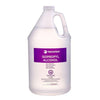

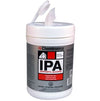
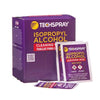

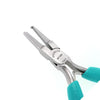
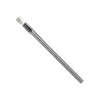
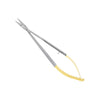
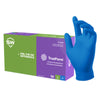

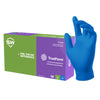



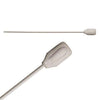
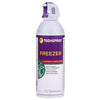
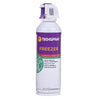
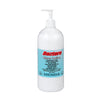


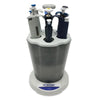




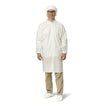

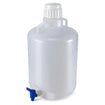
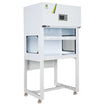
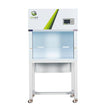








Very Interesting, Good job and thanks for sharing such a good information..https://www.gaiascience.com.sg/productdetails/ne5-28-28-litre-analogue-shaking-water-bath